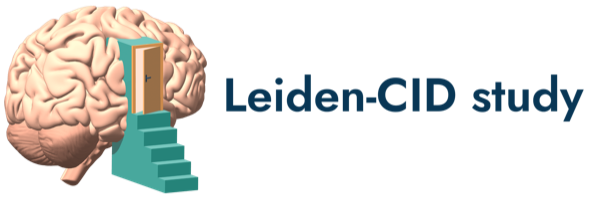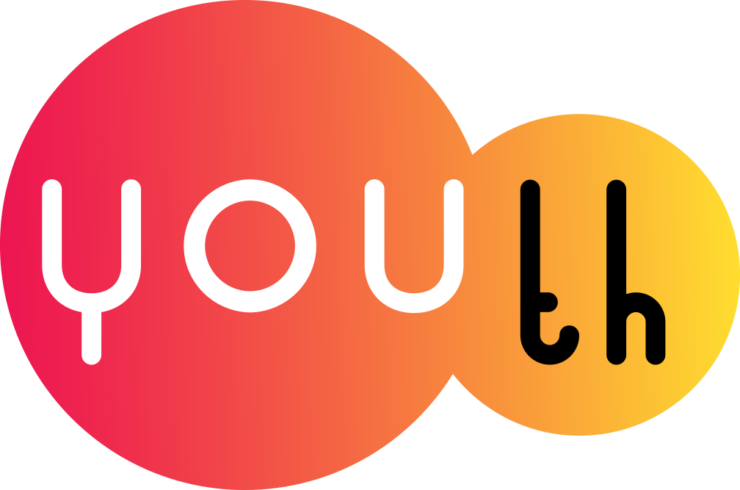-
measure Craniofacial growth (face development)
Study: Generation R Mode of collection: MeasurementsAndTests Anthropometrics/Body measures Available measurements: Generation R 9-10 years 13-14 years 17-18 yearsCraniofacial growth was determined using lateral cephalograms.Created October 17, 2024 • Updated October 20, 2024 -
measure Medical history - Health conditions and disease
Study: Generation R Mode of collection: SelfAdministeredQuestionnaire Available measurements: Generation R Early pregnancy Mid pregnancy 9-10 years 17-18 yearsMedical history - Health conditions and disease includes a list of general health problems, common diseases, infectious diseases and complaints.Created October 17, 2024 • Updated October 20, 2024 -
measure Accidents
Study: Generation R Mode of collection: SelfAdministeredQuestionnaire Available measurements: Generation R 6 months 1.5 years 5-6 yearsAccidents assesses home and traffic accidents that a child has experienced.Created October 17, 2024 • Updated October 20, 2024 -
measure 3D facial images
Study: Generation R Mode of collection: MeasurementsAndTests Anthropometrics/Body measures Available measurements: Generation R 9-10 years 13-14 years 17-18 yearsThree-dimensional (3D) facial images were taken of participants using a 3dMDface system (3dMD Inc., Atlanta, GA, USA) photogrammetric device by trained photographers.Created October 17, 2024 • Updated October 20, 2024 -
measure Pediatric Functional Gastrointestinal Disorders (ROME III criteria)
Study: Generation R Mode of collection: SelfAdministeredQuestionnaire Available measurements: Generation R 9-10 yearsPediatric Functional Gastrointestinal Disorders (FGIDs) are a group of common digestive conditions. The ROME III criteria are a set of standardized diagnostic guidelines developed by international experts in pediatric gastroenterology, which identify six types of FGIDs in children: Functional Abdominal Pain (FAP), Irritable Bowel Syndrome IBS),...Created October 17, 2024 • Updated October 20, 2024 -
measure Finger tapping task
Study: Generation R Mode of collection: MeasurementsAndTests Behavioral/cognitive task Available measurements: Generation R 9-10 yearsThe Finger Tapping Task is a computerized task that assesses motor control, speed and lateralized coordination. During the task, children have to tap switching between their right, left, or both index fingers as quickly as possible for 10 seconds. A total of five trials are measured, starting with a visual and an auditory queue. The total number of finger...Created October 17, 2024 • Updated October 20, 2024 -
measure Medical history - Fever
Study: Generation R Mode of collection: SelfAdministeredQuestionnaire Available measurements: Generation R 6 months 3 years 5-6 yearsThe Medical history - Fever questionnaire includes items about the fever history of children, including whether the child had a fever last year, associated symptoms, and doctor visits when the child had the symptoms.Created October 17, 2024 • Updated October 20, 2024 -
measure Asthma and allergies
Study: Generation R Mode of collection: SelfAdministeredQuestionnaire Available measurements: Generation R Early pregnancy Mid pregnancy 9-10 years 13-14 yearsAsthma and allergies assesses the presence of health symptoms related to asthma and allergies, including chronic bronchitis, asthma, allergies to housedust, and food and drink allergies. Items about risk factors for asthma (e.g., damp, stains, smoking, pets at home) and allergic reactions are also included. Asthma was assessed using items from the ISAAC.Created October 17, 2024 • Updated October 20, 2024 -
measure Obstructive Sleep Apnea (OSA) questionnaire
Study: Generation R Mode of collection: SelfAdministeredQuestionnaire Available measurements: Generation R 9-10 yearsThe Obstructive Sleep Apnea (OSA) questionnaire assesses the presence of symptoms of obstructive sleep apnea, such as difficulties breathing when asleep, snoring, night sweats, being restless, having nightmares, recurrent middle ear disease, and frequent morning headaches.Created October 17, 2024 • Updated October 20, 2024 -
measure Children's Body Image Scale
Study: Generation R Mode of collection: SelfAdministeredQuestionnaire Available measurements: Generation R 9-10 years 13-14 yearsThe Children's Body Image Scale consists of seven gender-specific figures in ascending order of adiposity, which correspond with actual sex-adjusted body mass index (BMI) categories, including underweight, normal weight, overweight and obesity. Using figures, children are asked to indicate to which figure their body looks most similar, and to indicate...Created October 17, 2024 • Updated October 20, 2024 -
measure Air pollution
Study: Generation R Mode of collection: Observation Available measurements: Generation R Early pregnancy Mid pregnancy Late pregnancy Birth 6 weeks 2 months 3 months 4 months 6 months 1 year 1.5 years 2 years 2.5 years 3 years 4 years 5-6 years 7 years 8 years 9-10 years 11 years 12 years 13-14 years 17-18 yearsFor all participants, exposure to air pollutants at each geocoded address was assessed using continuous monitoring data and Geographic Information Systems (GIS)-based modelling techniques, considering the spatial and temporal variation in air pollution.Created October 17, 2024 • Updated October 20, 2024 -
measure Pain List
Study: Generation R Mode of collection: SelfAdministeredQuestionnaire Available measurements: Generation R 2 years 3 years 5-6 yearsThe Perquin’s Pain List is used to measure child's chronic pain. The Perquin’s Pain List focuses on the last 3 months, and comprises categorical yes/no-items regarding the experience and the characteristics of pain, such as the severity, duration, when, where, how often, and cause (rated on different Likert scales).Created October 17, 2024 • Updated October 20, 2024 -
measure Eye health
Study: Generation R Mode of collection: SelfAdministeredQuestionnaire Available measurements: Generation R 9-10 years 13-14 years 17-18 yearsEye health assesses children's eye health and eye care-related habits. Examples are 'How many hours in total does your chlid spend doing close-up activities?', and 'Does your child do close-up work mainly by day light or mainly by artificial light?'.Created October 17, 2024 • Updated October 20, 2024 -
measure Walking Backwards task
Study: Generation R Mode of collection: MeasurementsAndTests Behavioral/cognitive task Available measurements: Generation R 9-10 yearsThe Walking Backwards task (Rückwärts Balancieren) from the Body Coordination Test for Children (Korperkoordinationstest für Kinder) assesses balancing ability. Children are asked to walk backwards on three different balance beams. They start with a forwards practice, after which they have to walk backwards twice.Created October 17, 2024 • Updated October 20, 2024 -
measure Pandemic Questionnaire
Study: L-CID Mode of collection: SelfAdministeredQuestionnaire Available measurements: Early Childhood Cohort ECC - T6-Covid
Middle Childhood Cohort MCC - T5-CovidThe Pandemic Questionnaire is a self-developed questionnaire that aims to measure Covid-19-symptoms (e.g., fever, coughing, runny nose), Covid-19-related behaviors (e.g., meeting friends on crowded places, staying home as much as possible), and pandemic-related feelings (e.g., feeling inclined to help others, feelings of stress). The child-report version...Created October 17, 2024 • Updated October 20, 2024 -
measure Physical Activity Questionnaire (PAQ)
Study: YOUth Mode of collection: SelfAdministeredQuestionnaire Available measurements: Child and Adolescent 9 years 12 yearsThe Physical Activity Questionnaire (PAQ) is a self-report questionnaire for children (PAQ-C) and adolescents (PAQ-A) in which the participant is asked about their physical activity in the past 7 days. They for example indicate which sports they practiced and how often, and how active they have been during schooltime and at home, during both the week and...Created October 17, 2024 • Updated October 20, 2024 -
measure Length, weight, head circumference
Study: YOUth Mode of collection: MeasurementsAndTests Anthropometrics/Body measures Available measurements: Baby and Child 3 years 6 years
Child and Adolescent 9 years 12 yearsThe body measures height, head circumference, and weight were measured by the experimenter in centimeters and kilos respectively. Participants were asked to take off any shoes and large vests and sweaters that could affect these measures.Created October 17, 2024 • Updated October 20, 2024 -
measure General health
Study: YOUth Mode of collection: SelfAdministeredQuestionnaire Available measurements: Baby and Child 20 weeks 10 months
Child and Adolescent 9 years 12 yearsGeneral health assesses the self-reported general health of parents. It includes any diseases and whether and when the parent is under treatment for those diseases, such as migraine or other headaches, epilepsy, psychiatric illness, anxiety, depression, eating disorders and physical or mental disability.Created October 17, 2024 • Updated October 20, 2024 -
measure CoRonavIruS health Impact Survey (CRISIS)
Study: YOUth Mode of collection: SelfAdministeredQuestionnaire Available measurements: Baby and Child 20 weeks 30 weeks 0 months 5 months 10 months 3 years 6 years
Child and Adolescent 9 years 12 yearsThe CoRonavIruS health Impact Survey (CRISIS) assesses mental, behavioral, and physical health effects of the Covid-19 pandemic, as well as a range of pandemic-related and pre-existing risk and protective factors. The baseline version of the CRISIS assesses the following domains: background information about the household, physical and mental health prior...Created October 17, 2024 • Updated October 20, 2024 -
measure Periconceptual health
Study: YOUth Mode of collection: SelfAdministeredQuestionnaire Available measurements: Baby and Child 20 weeks
Child and Adolescent 9 yearsPericonceptual health was assessed by a questionnaire filled out by the biological mother of the child (unless the non-biological mother had the requested information). The questionnaire asks about (previous) pregnancies, the number of live births (and information about this), the child's birth weight, whether the child's pregnancy was planned, possible...Created October 17, 2024 • Updated October 20, 2024



